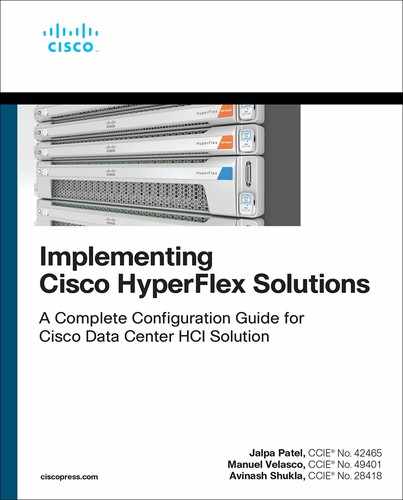Preface
Decisions made within IT departments have never been more important to the broader business than they are today. IT departments must react quickly to new business initiatives that are designed to drive bottom-line improvements and generate new revenue streams. It should be no surprise that IT departments are increasingly looking for infrastructure that improves productivity and agility within the data center. Organizations around the world are turning to hyperconverged infrastructure (HCI) to achieve such goals. Indeed, HCI offerings such as Cisco’s HyperFlex have become critical platforms for modernizing data center infrastructure, thanks to their ability to:
Collapse silos of storage, compute, and data management services down to a cluster of x86 servers that can be deployed, managed, and supported as a single system
Support IT organizational transformation through consolidation of roles that are focused on virtualization, compute, and storage at a generalist level
Reduce the need to deploy different types of siloed infrastructure within the data center, including data efficiency and data protection solutions
Today, Cisco’s HyperFlex HCI solutions enable very high levels of efficiency, agility, and resiliency within the data center by enabling tight integration of core infrastructure (compute, storage, networking, and system management), increased levels of automation, and simplified life cycle management. HyperFlex solutions are fully engineered appliances built on UCS servers (x86) that provide an abstracted pool of capacity, memory, and CPU cores that are used as the foundation for server-centric workloads (for example, the hypervisor, VMs, and applications) as well as storage-centric workloads (for example, data persistence, data access, and data management).
Who Should Read This Book?
This book is intended for sales engineers, field consultants, professional services, IT managers, partner engineering, and customers deploying Cisco HyperFlex. External references are provided wherever applicable, but readers are expected to be familiar with hypervisor-specific technologies, infrastructure concepts, networking connectivity, and security policies related to customer installations. As we see an increasing trend in deployment of HyperFlex with UCS servers, the book will be useful to both small-scale customers and large-scale data centers. It can be considered as one book for all who deal with HyperFlex data center solutions on a daily basis.
How This Book Is Organized
This book covers a diverse set of topics related to the successful deployment of HyperFlex. The chapters are as follows:
Chapter 1, “Overview of Data Center Products”: This chapter provides an overview of the data center products required for networking, compute, and storage. This chapter does not provide details on each product but does provide an overview to help you understand how HyperFlex can connect with other data center devices.
Chapter 2, “HyperFlex Architecture”: This chapter describes the architecture of HyperFlex Data Platform, including the components that make this solution possible. This chapter also reviews the different cluster topology configurations that are supported by HyperFlex HX Data Platform. It also discusses both the logical and physical topologies and the supported hardware for these topologies.
Chapter 3, “Installing HyperFlex”: This chapter covers how to install and deploy the various types of Cisco HyperFlex clusters. It includes information on preparation, prerequisites, and the various components required to install a HyperFlex cluster.
Chapter 4, “Managing HyperFlex”: With Cisco HyperFlex, you get simplified hyperconverged infrastructure management with a choice of tools to best fit your needs. You can manage HyperFlex through HyperFlex Connect, hypervisor management plug-ins, or the Cisco Intersight cloud-based platform. This chapter covers management through HyperFlex Connect, a user interface that provides a view of the HX storage cluster status, components, and features such as encryption and replication.
Chapter 5, “Maintaining HyperFlex”: This chapter provides details on managing a HyperFlex system and how to perform Day 2 operations on a HyperFlex cluster. The chapter explains HyperFlex licensing and virtual machine management, including native snapshots and ReadyClones. It also includes information on how to scale the various types of HyperFlex clusters and perform hardware replacements in HyperFlex systems.
Chapter 6, “Advanced Features”: This chapter provides an overview of the HyperFlex Data Platform disaster recovery feature and goes over the configuration steps to properly enable the feature. Finally, it presents an overview of supported third-party solutions you can use as second layer of protection for HyperFlex Data Platform.
Chapter 7, “Deploying HyperFlex Anywhere with Cisco Intersight”: This chapter provides details about what Cisco Intersight is and how you can use it to deploy edge clusters and standard clusters.
